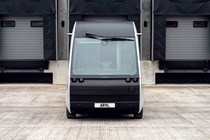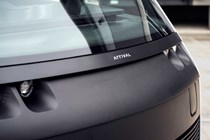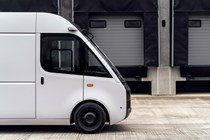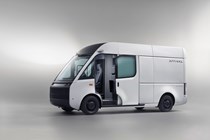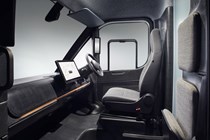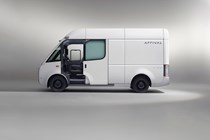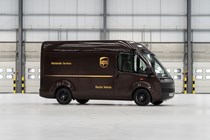The UK arm of the company behind the Arrival electric van has entered administration.
Administrators for the embattled company are hoping to find a buyer for the UK arm of the firm and its assets in a bid to repay its debts. These assets include the van’s electric vehicle platform, the software, intellectual property and the research and development material.
The administration team is taking over the Arrival UK Ltd and Arrival Automotive UK Limited subsidiaries of the Arrival brand, putting 172 jobs at risk and throwing the future of the company into doubt. The other elements of the business are said to be continuing their activities as normal outside of the administration process.
The announcement comes a week after it was delisted from the New York stock exchange, following a failure to secure emergency funding.
It was previously backed by Hyundai and Kia and had chosen to concentrate on the US market as it looked to take advantage of market incentives and a potentially larger market.
Run of bad news
The administration announcement is far from being a surprise one, as Arrival has had to make several cuts in the past as it looked to make financial savings. A previous round of redundancies saw the global workforce being stripped back. It also made cost reductions in third-party spending and on real estate as it looks to slash the cost of running the fledgling business.
The first new Arrival electric van was produced at the company’s microfactory in Bicester, Oxfordshire in September 2022, but this site is not set to move forward as previously planned as plans have now been dramatically scaled back. The financial investment required to get the UK site up to scratch was described as ‘significant.’ Trials had taken place on UK roads, but plans to launch a vehicle on sale never made it to fruition.
Only in April 2022, Arrival was aiming for as many as 600 vans to be delivered to customers, but this was then slashed to 20 in September of that year.
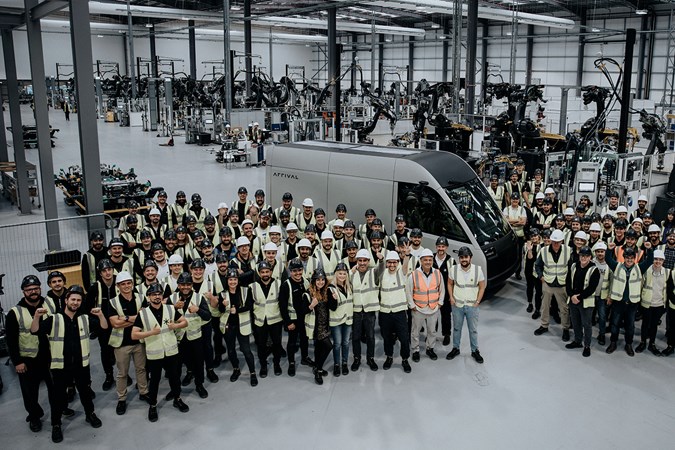
Earlier in 2022 Arrival put its car and bus projects on hold, according to the Financial Times. It made losses of $89.6m (£73.8m) in the second quarter of 2022, which is up from $56.2m (£46.2m) in the same period in 2021.
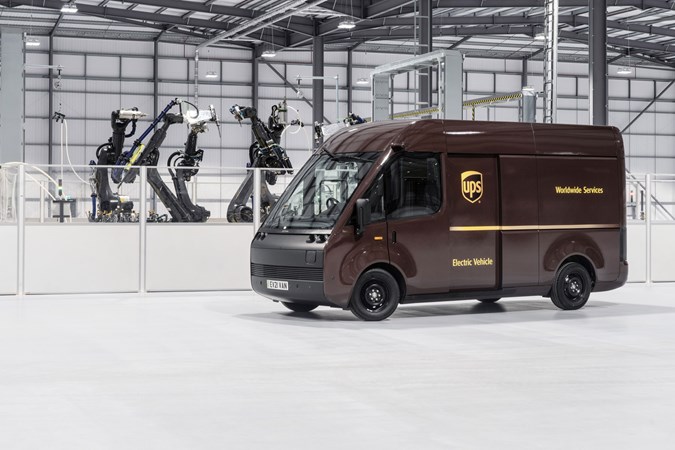
Who or what is Arrival?
Arrival describes itself as a ‘global technology company creating electric vehicles using its game-changing technologies’. Based in the UK and the USA, the firm was planning to build electric buses and vans using its own designs and software. It then added cars to its intended portfolio, although it had to postpone these plans.
Originally some 1,700 people worked for Arrival, which moved it out of the realms of basic start-up, but these figures were slashed as growth halted.
Sticking with the van, the design and construction is such that it can be built in what Arrival calls ‘microfactories’ – including the one it was setting up in Bicester, Oxfordshire – rather than needing a traditionally massive and costly manufacturing plant.
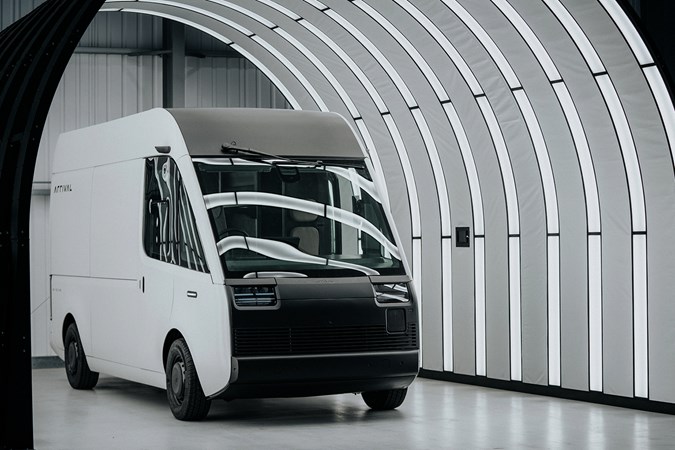
The flexibility of these microfactories combined with the materials used and the way the van is designed were intended to help Arrival achieve pricing that means buyers won’t be penalised for choosing electric power over diesel.
At the same time, it promised that the materials and technologies will offer greater durability – extending the van’s life expectancy – as well as ‘new levels of comfort’ and ‘elevated’ connectivity.
The purpose-built 100% electric van promised impressive payload and driving range, lots of customisation, upgradeable components, and a price ‘comparable’ with traditional diesel rivals.
Those rivals include the Ford Transit and Mercedes Sprinter, given the Arrival van’s size. And though both those competitors are available as electric models, Arrival is hoping its clean-sheet design will win favour over the likes of the eSprinter and E-Transit in the battle to convince van drivers to switch to electric.
We have previously spoken to Arrival’s van head of product, Patrick Bion, to get more information on the company’s plans.
Constructed in a very different way
As you can see from the pictures, the Arrival van has a slightly unconventional look – but it’s what’s underneath that really matters.
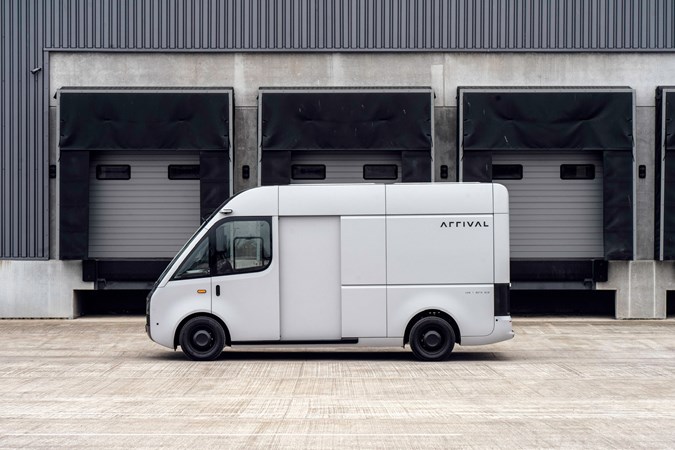
Built around an aluminium frame and ‘proprietary’ composite body panels (saving the cost of licencing the tech from anyone else; the same strategy explaining the in-house design and development of so much of this van), the basic structure is said to be both light and resistant to the kind of day-to-day damage that vans endure.
Clarifying this further, Arrival’s van head of product, Patrick Bion explained that the colour of the panels is moulded-in rather than painted. So not only is there no metal to reveal if you scrape the side of an Arrival van, each panel is coloured right through; even damage that doesn’t just pop out won’t show up so obviously.
What’s more, panels that need replacing can be produced in ’24 minutes’ and are attached using structural adhesive. Meaning no need to hold stock of these parts, no need to cut damage out, no need for welding, and no need to paint. Which in many cases will mean no need for specialist repair facilities – a regular workshop will be able to do much of the work.
What are the specs of the Arrival electric van?
Thanks to the lightweight design, which saves around 200kg compared with a conventional van structure, even with heavy batteries on board the Arrival van is said to offer highly competitive payload ratings of up to 1,975kg.
The plan was to make it available in a choice of four body lengths (L1, L2, L3 and L4) and three roof heights (H1, H2 and H3) – and with four different sizes of battery pack.
The dimensions information for the L3 H3 Arrival van were as follows:
- Exterior length: 5,790mm
- Exterior height: 2,730mm
- Exterior width with / without mirrors: 2,340 / 2,075mm
- Exterior width with e-mirrors: 2,075mm
- Wheelbase: 3,550mm
- Front overhang: 925mm
- Rear overhang: 1,315mm
- Ground clearance: 180mm
- Turning circle (kerb-to-kerb): 12.9m
The only interior dimensions provided were the loading length of 3,450mm and cargo volume of 14.0 cubic metres (both for the L3 H3 version).
Arrival also said that L1 models will be 5.1m long and L4 models 6.5m in length.
Powered by a 120kW electric motor (equivalent to 163hp), the Arrival electric van is front-wheel drive (FWD), with a top speed of 75mph.
What’s the driving range?
The four battery pack options offer the following predicted driving ranges and payload ratings for the L3 H3 model:
| Battery size | 67kWh | 89kWh | 111kWh | 139kWh |
| Driving range | 112 miles | 149 miles | 180 miles | 211 miles |
| Gross vehicle weight | 4,250kg | |||
| Kerb weight | 2,275kg | 2,395kg | 2,515kg | 2,635kg |
| Max payload | 1,975kg | 1,855kg | 1,735kg | 1,615kg |
Those are WLTP range figures – but only predicted ones. A maximum driving range of 211 miles has since been overtaken by many of the major large van rivals, but that also managed a payload of 1,615kg is impressive claim.
It helps that as an electric van, Arrival is able to give its van a 4,250kg gross vehicle weight (GVW) while still allowing ordinary car licence holders to drive it; diesel models are limited to 3,500kg GVW.
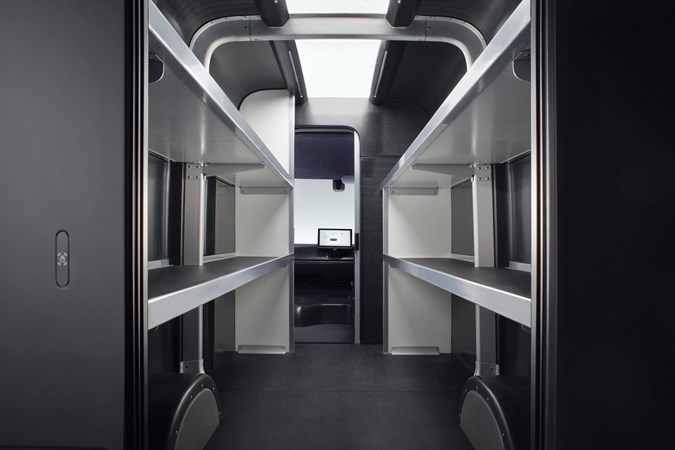
No charging times had been given, but the Arrival van has up to 120kW DC charging capability and up to 11kW AC charging capability.
Offering such a wide choice of modular battery sizes means buyers will be able to better balance their driving range requirements against the purchase price of the van.
What’s going on with the door mirrors?
In the pictures here, the van is fitted with ‘e-mirrors’ (as Arrival calls them) – cameras that replace the conventional mirrors, improving aerodynamics and efficiency, and therefore also driving range.
This is rare on a van but the technology is already used in some production cars and trucks.
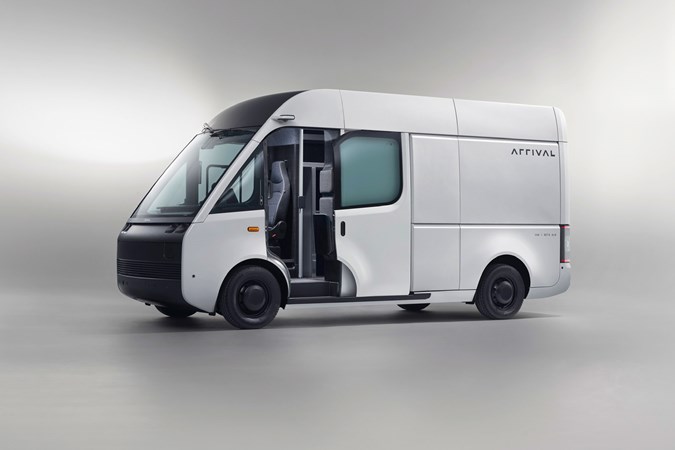
The vehicle pictured is what Bion describes as the ‘walk-in van’. Designed for parcel delivery and courier firms, this has a sliding front passenger-side door and a walk-through bulkhead.
This allows the driver to access the load area – which is lined with integral shelving – without leaving the vehicle. And means they can step out of the van on the kerb side very easily.
The e-mirrors are also just one element of the high-technology offering that Arrival planned for this van. This covers all the latest advanced driver-assistance systems (ADAS) you’d expect from a brand new van – such as autonomous emergency braking, blindspot monitoring, traffic sign recognition, lane-keeping assistance, 360-degree surround-view cameras – plus advanced connectivity for fleet management.
This includes ‘in-house components’ using Arrival’s ‘proprietary software’ that have ‘real-time health monitoring and predictive maintenance to reduce downtime’. Meaning the van was designed to self-assess for problems and faults, alert you ahead of time and hopefully avoid leaving you stranded at the side of the road.

The cabin was also designed to feature a massive 15.6-inch touchscreen interface to relay vehicle data to the driver ‘in an optimal fashion’.
How much was the Arrival van going to cost – and can I buy one?
We never got to a stage where official pricing was announced, due to the many delays and setbacks that Arrival has faced, so everything is caveated with that in mind. However, in the past Arrival was on record saying the van will have a price comparable to ‘fossil fuel vehicles.’
Arrival has also said that the TCO (total cost of ownership) should be ‘substantially lower’ than for a diesel. This is also true of other electric vans, since electricity is cheaper per mile than diesel (depending on how you charge; public charges can be very expensive) and servicing costs can be as much as 40% lower – but Bion says Arrival will even offer TCO savings versus electric rivals.
Bion also confirmed that Arrival had planned to make the van available to the ‘open market’ – meaning regular retail customers. The initial focus was on large fleets, as the company sought the financial stability involved with bigger orders, but the aim was to improve the electric van experience for everyone, not just big corporations.
There were no plans for a dealer network, however and instead vans were to be sold directly by Arrival. Servicing – for which the van has fewer requirements than traditional rivals – was going to be handled by Arrival and partners.
Just so you know, we may receive a commission or other compensation from the links on this website - read why you should trust us.






